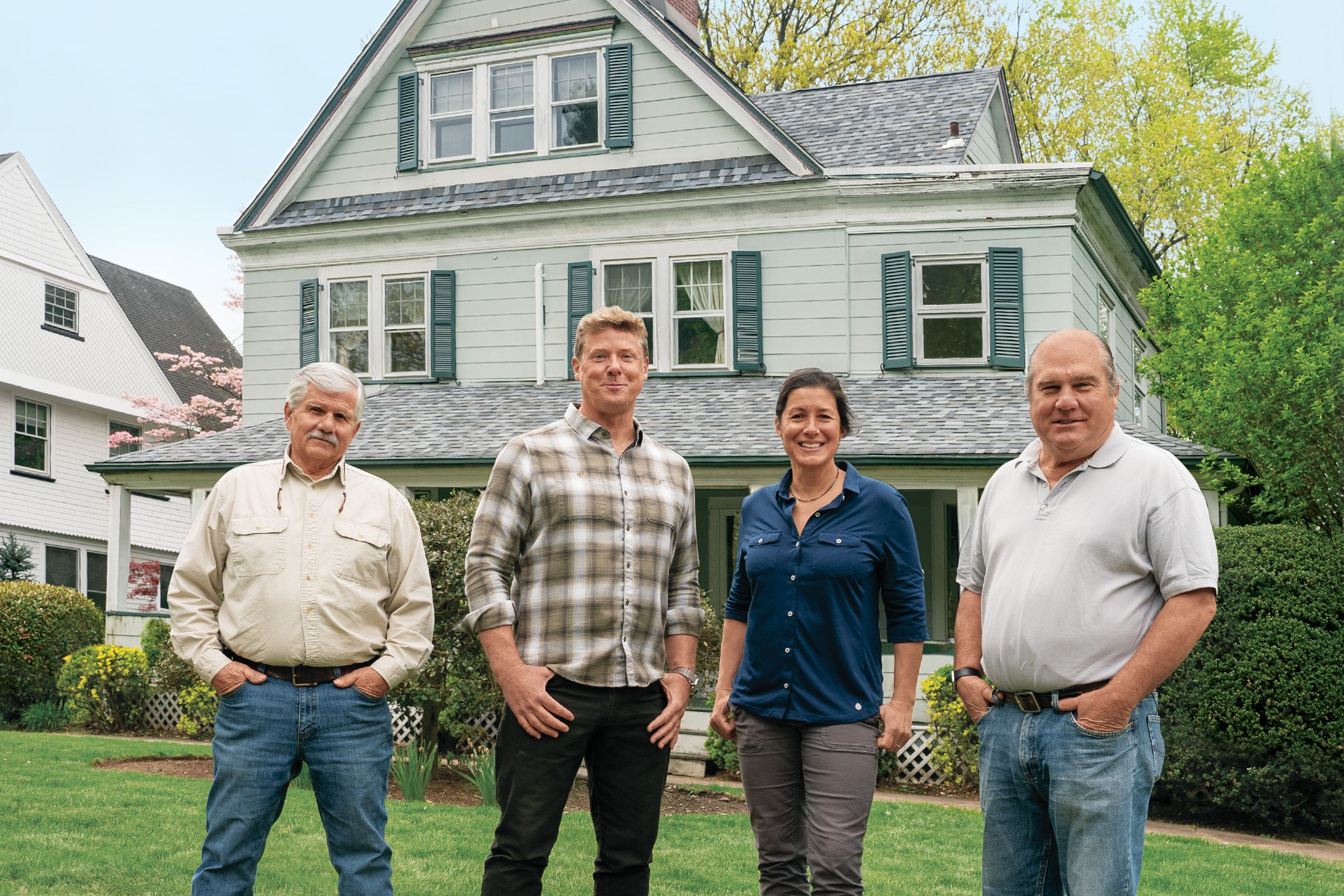On a tree-lined street in Glen Ridge, New Jersey, among houses of similar size and vintage, stands the gray Victorian that has been Sunita and Shankar Chaudhuri’s home for nearly 30 years. From the start, the three-story house, built in 1887, warmed their hearts, with its once-grand front porch, bay-windowed living room, and fluted casings with rosettes.

Historic Charm and Multi-Generational Roots
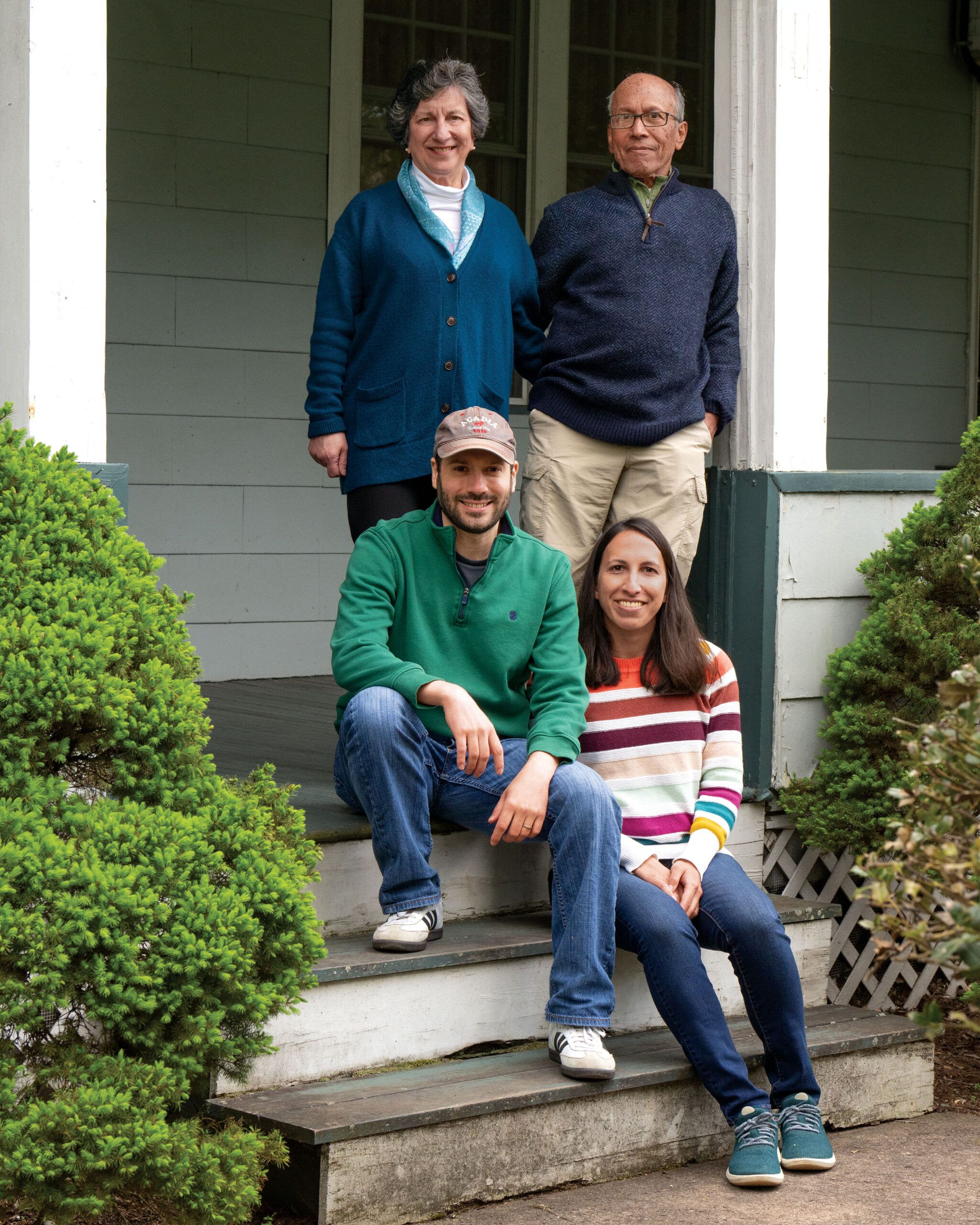
The couple raised their two children in the 3,200-square-foot home, with Shankar’s mother in residence, too, instilling an appreciation for multiple generations living under one roof and deepening their commitment to the area. The couple moved there from a smaller 1928 house in the same town, which is filled with well-preserved late-19th- and early-20th-century houses.
But after years of taking care of family first and house repairs second, the owners saw the issues facing the gracious old Victorian becoming more apparent, from uneven floors that hinted at structural problems to a heating system that left some rooms icy cold.
With both children grown and on their own, Sunita and Shankar found themselves pondering the work needed in a home too big for just two when the pandemic hit. At the same time, their daughter, Asha, and her husband, Jason Berry, both professionals living in a Hoboken, New Jersey, apartment, started yearning for more space.
Combining households became a recurring topic of conversation. They agreed that when Shankar’s mother had lived with them, they all benefited from having three generations in one house. “I could not have continued to work and have a career without her,” says Sunita, who commuted to New York City for a senior-level finance job.
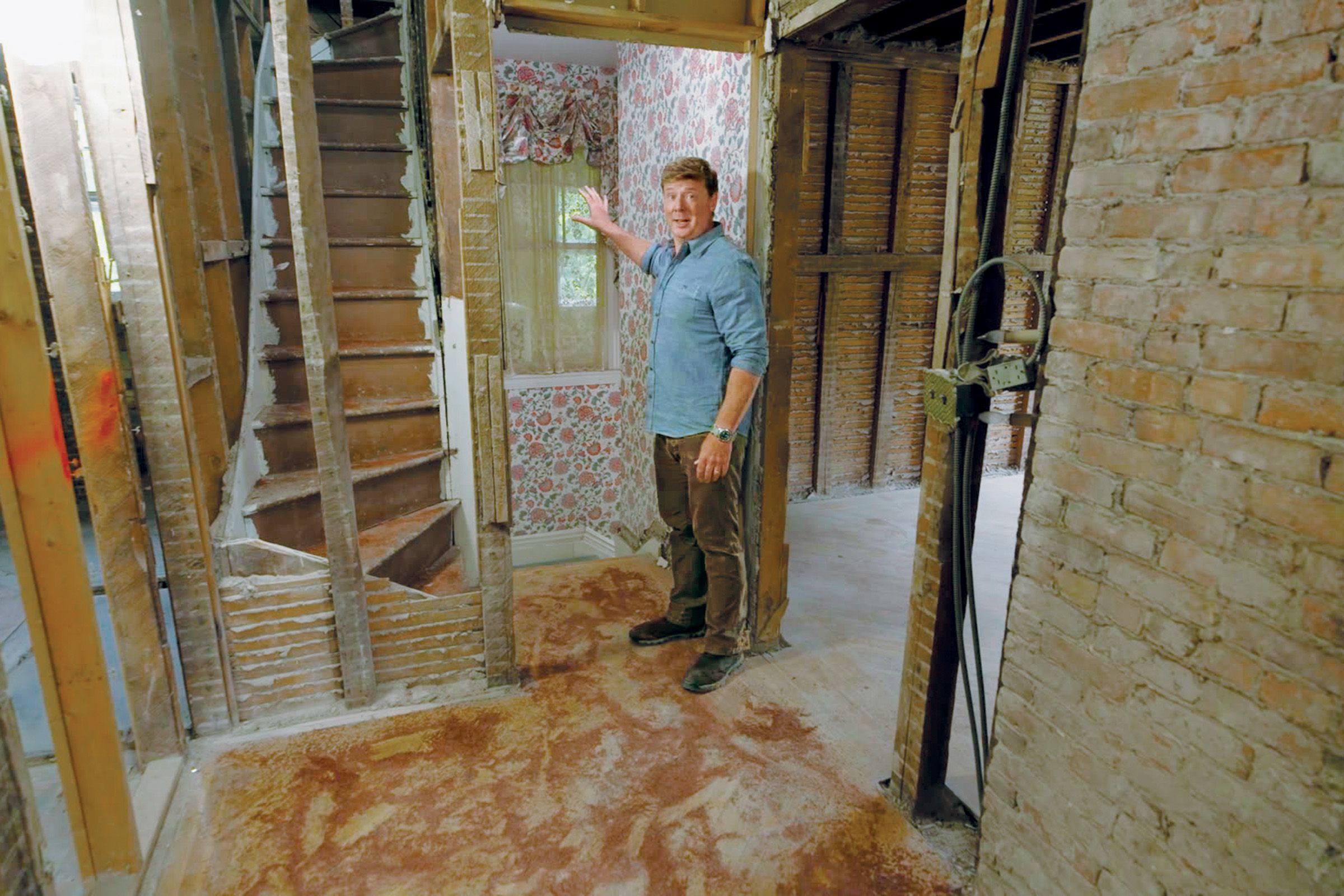
“We all learned what love and affection mean, what old age means,” says Shankar of the experience. After months of discussion, a mutual decision emerged: They would live together and renovate the Victorian to accommodate two generations—and a third when Asha and Jason start a family.
“I don’t know any other way of growing up other than having family and multiple generations in the same home,” says Asha. “I feel fortunate that we can do it again.” Jason is used to family proximity, too: “I grew up on a farm, with my grandparents and cousins just across a field.”
The Renovation Process Begins
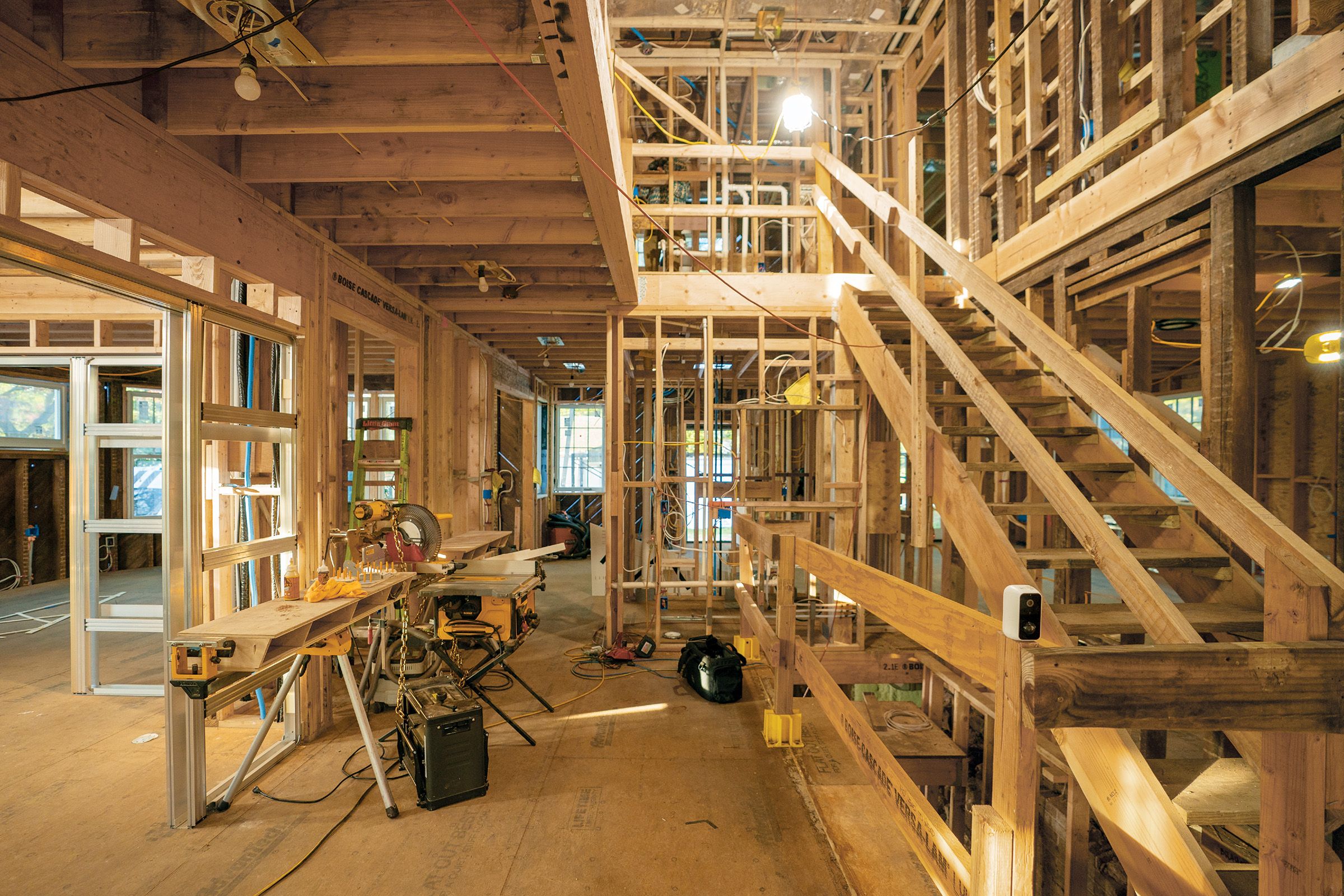
To ready the house for its next chapter, the family turned to architect Daniel Kopec and builder Zachary Dettmore, who are making the dream of multigenerational living a reality, with help from This Old House, which is documenting the home renovation as part of its 45th television season.
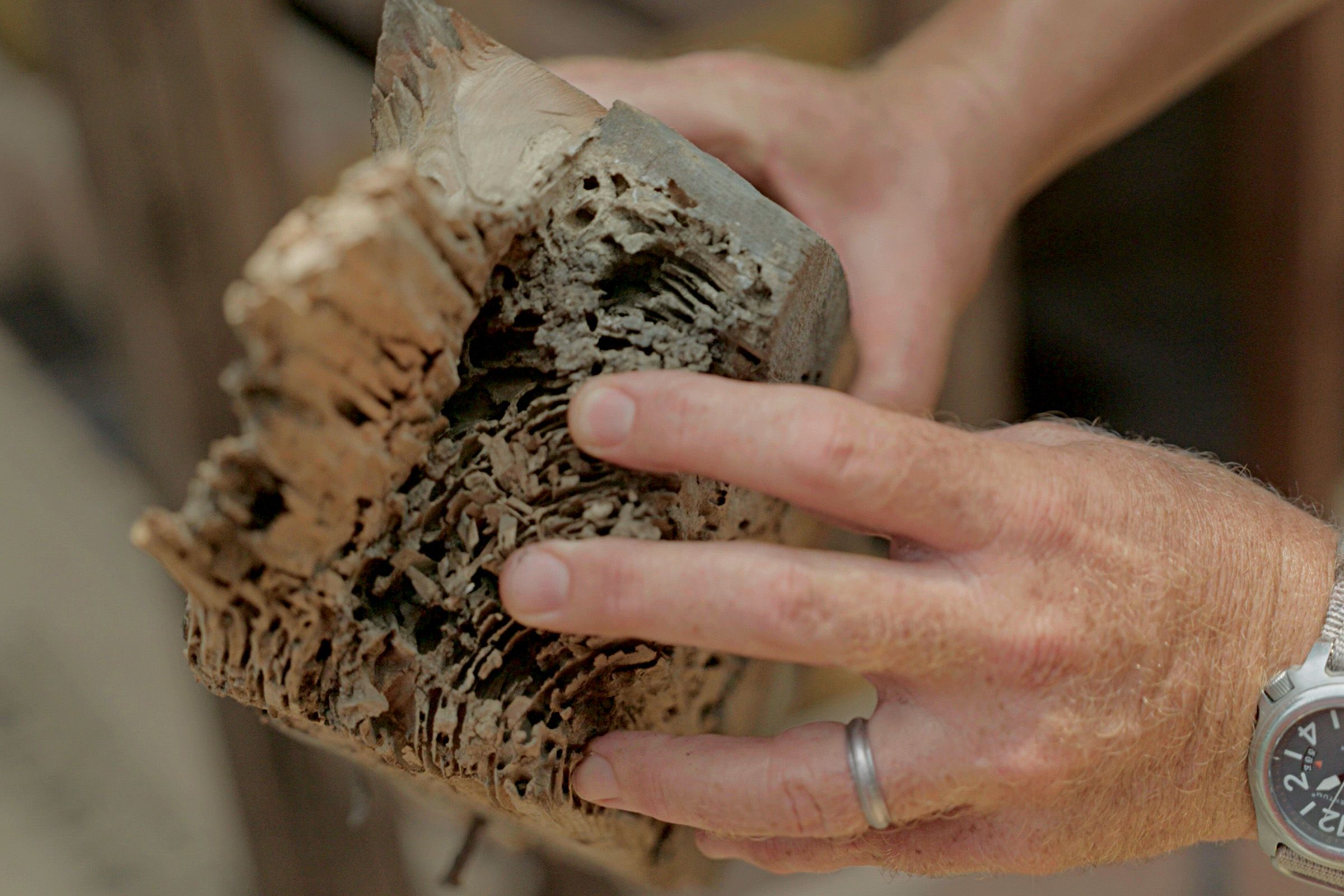
“This house is a gem—it’s historical, like most of the houses in Glen Ridge, and now it’s getting a new lease on life,” says TOH host Kevin O’Connor, who grew up in a nearby town. “Best of all is the multigenerational story, which is compelling for many reasons, primarily that you are there to help each other.”
Three obvious issues had to be addressed first. The layout was awkward as a result of previous owners’ renovations: “It was like a maze just to walk from room to room: Everything was so divided; there was always a wall in the way,” says Asha. The heating system was inadequate, compounded by drafty windows and several holes in the foundation that let in cold air.
The house’s original steam-heat distribution network still existed, now fueled by a gas boiler (rather than coal), but it was faulty and flat-out didn’t work in several rooms. A recently added mini-split system provided air-conditioning and heat in key areas. Last were the uneven floors, whose height varied by as much as 6 inches from room to room, due to structural issues.
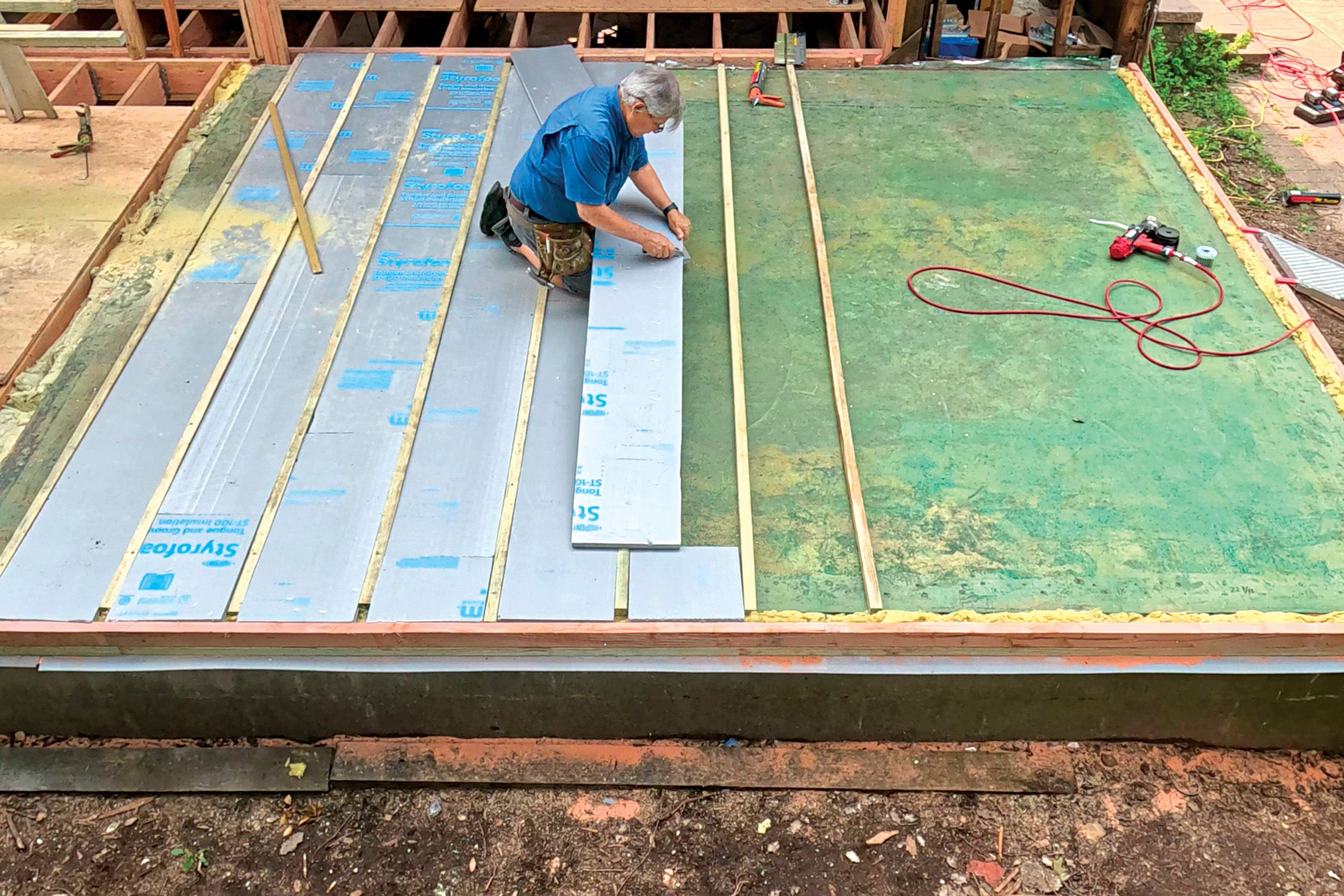

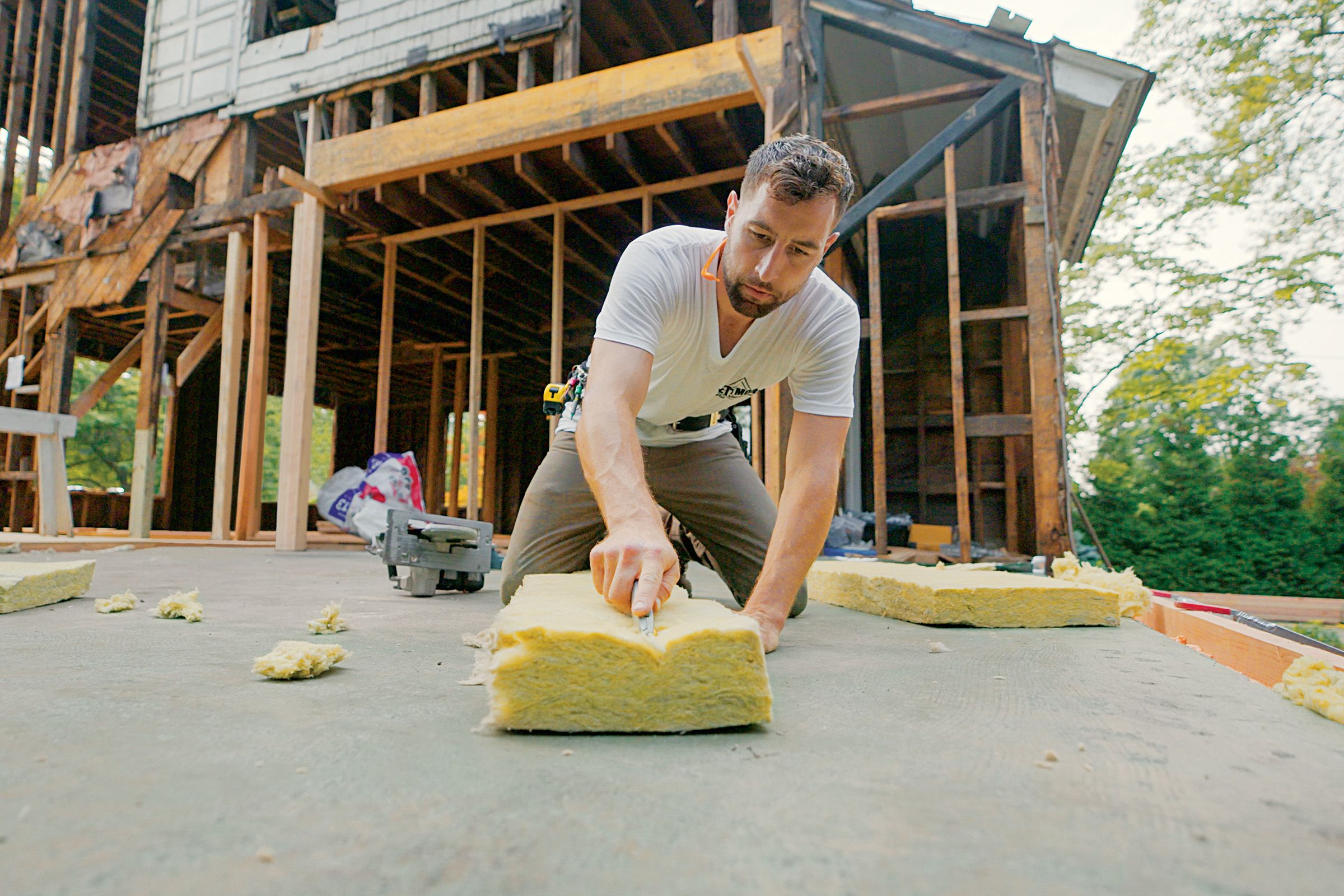
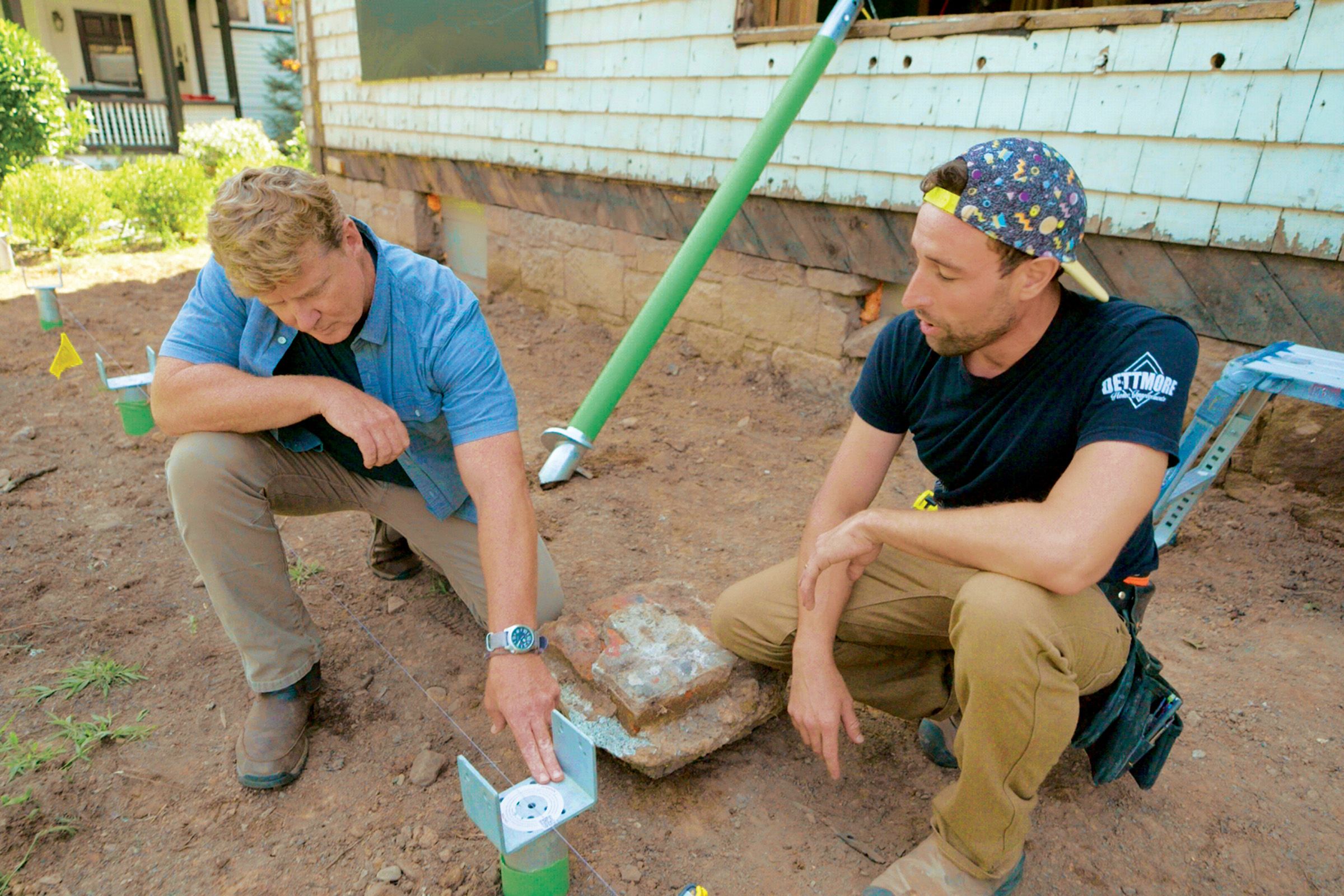
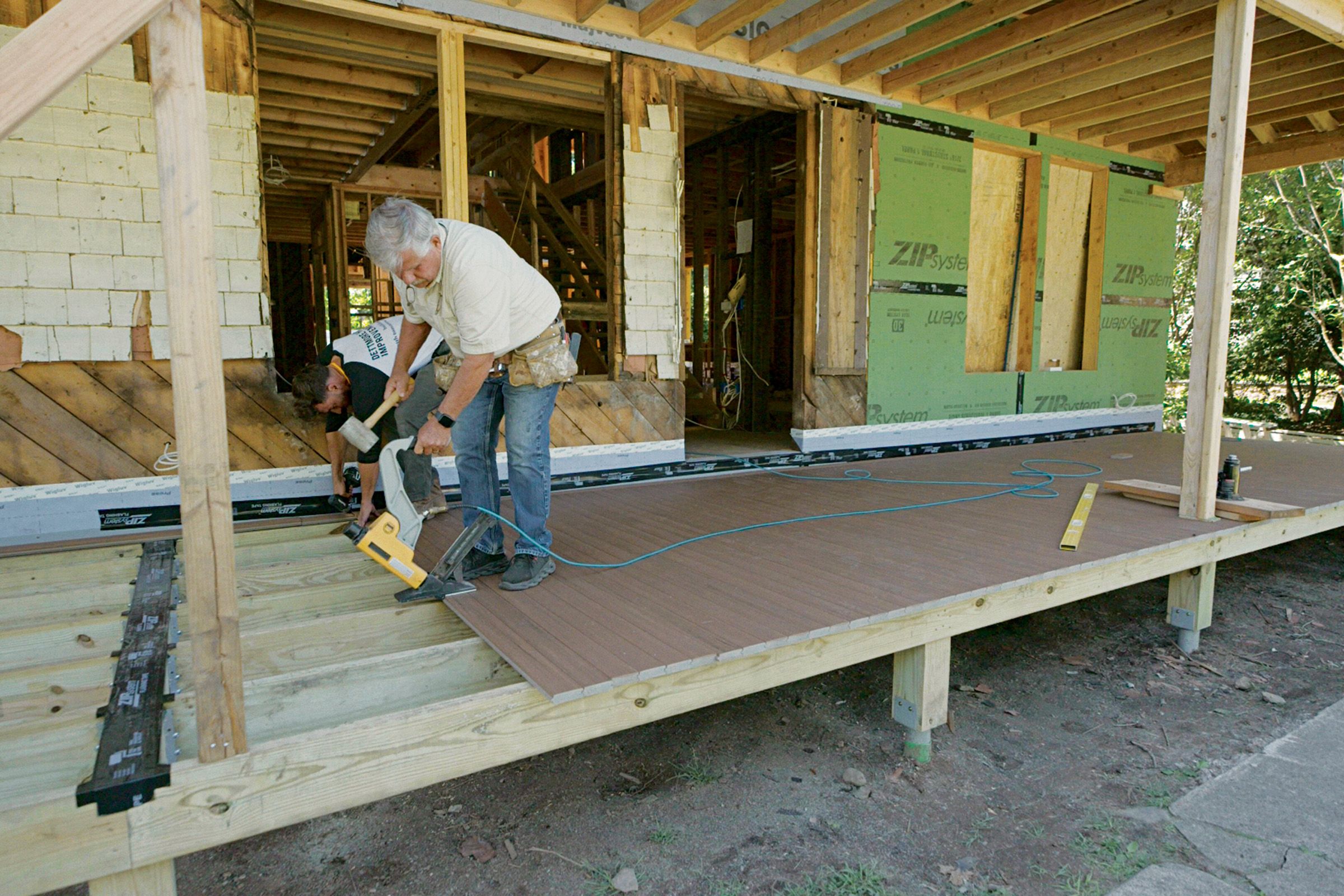





In addition, the family yearned to restore the house’s original architectural features by peeling off asbestos siding and replacing it with era-appropriate clapboard and shingles, repairing rotting eaves, and rebuilding the front porch with the open balustrade and turned posts they had seen in historical photos.
Victorian Architecture Meets Functional Updates
At the homeowners’ request, Kopec drew up plans that honor the house’s Victorian roots and stay within the existing footprint: “We wanted to preserve exterior character, but inside, we designed for life in the 21st century.” He proposed shared spaces on the first floor—an open-plan kitchen and dining area to eliminate the warren of rooms on one side of the house, while keeping the gracious proportions of the bay-windowed living room and parlor on the other.
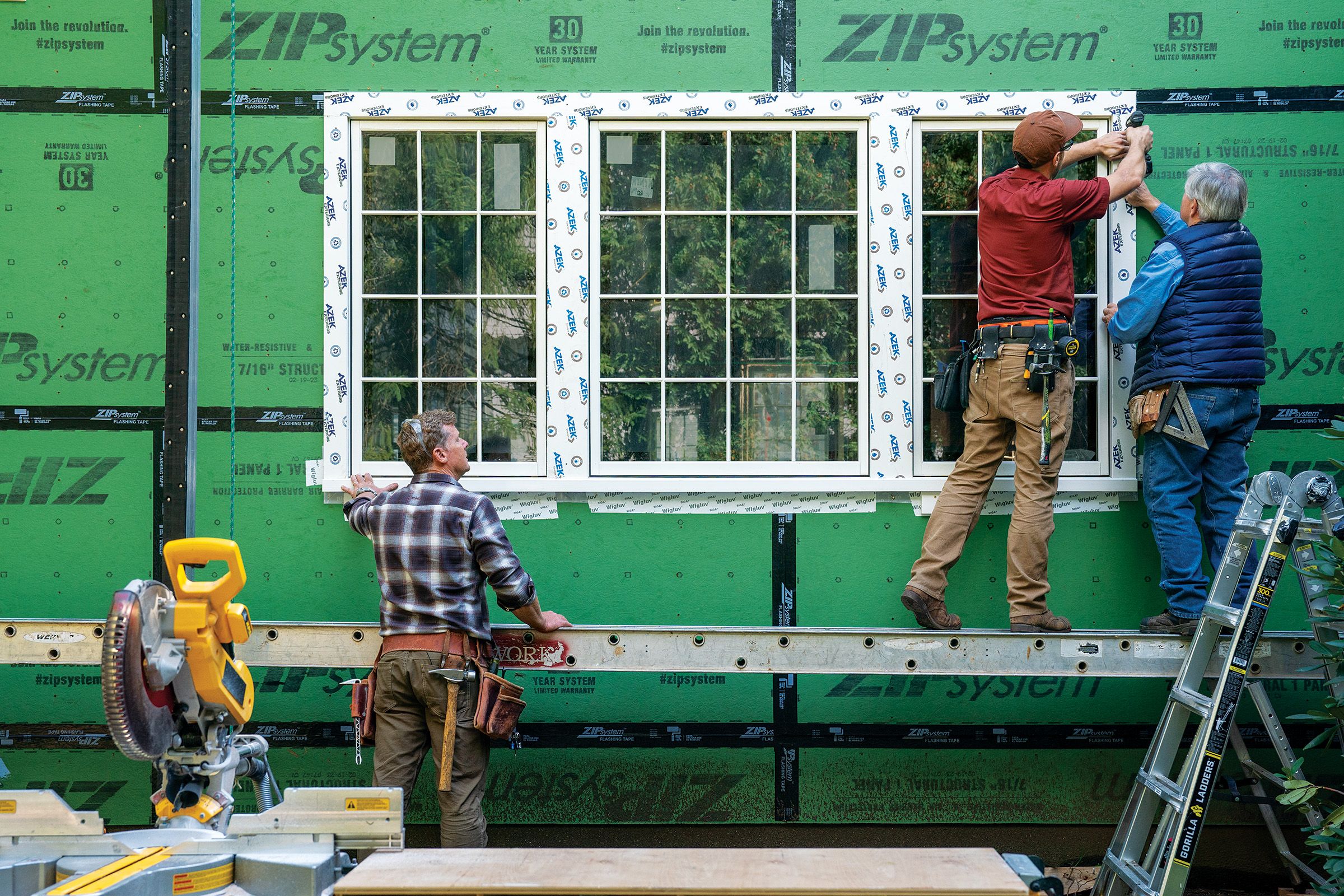
Kopec designed a second-floor primary suite for Asha and Jason, with adjacent laundry and nursery space, over a one-story shed-roof addition built on a slab decades ago. Sunita and Shankar opted for their retreat—living room, bedroom, and bath—to be located on the third floor, an underutilized area that would be given access stairs with a gentler rise and a skylight to maximize the natural light. “We are both active and happy to climb stairs,” says Sunita. Should that change, the plans also include pocket doors for the first-floor parlor so that it can be used as a bedroom one day, if necessary.
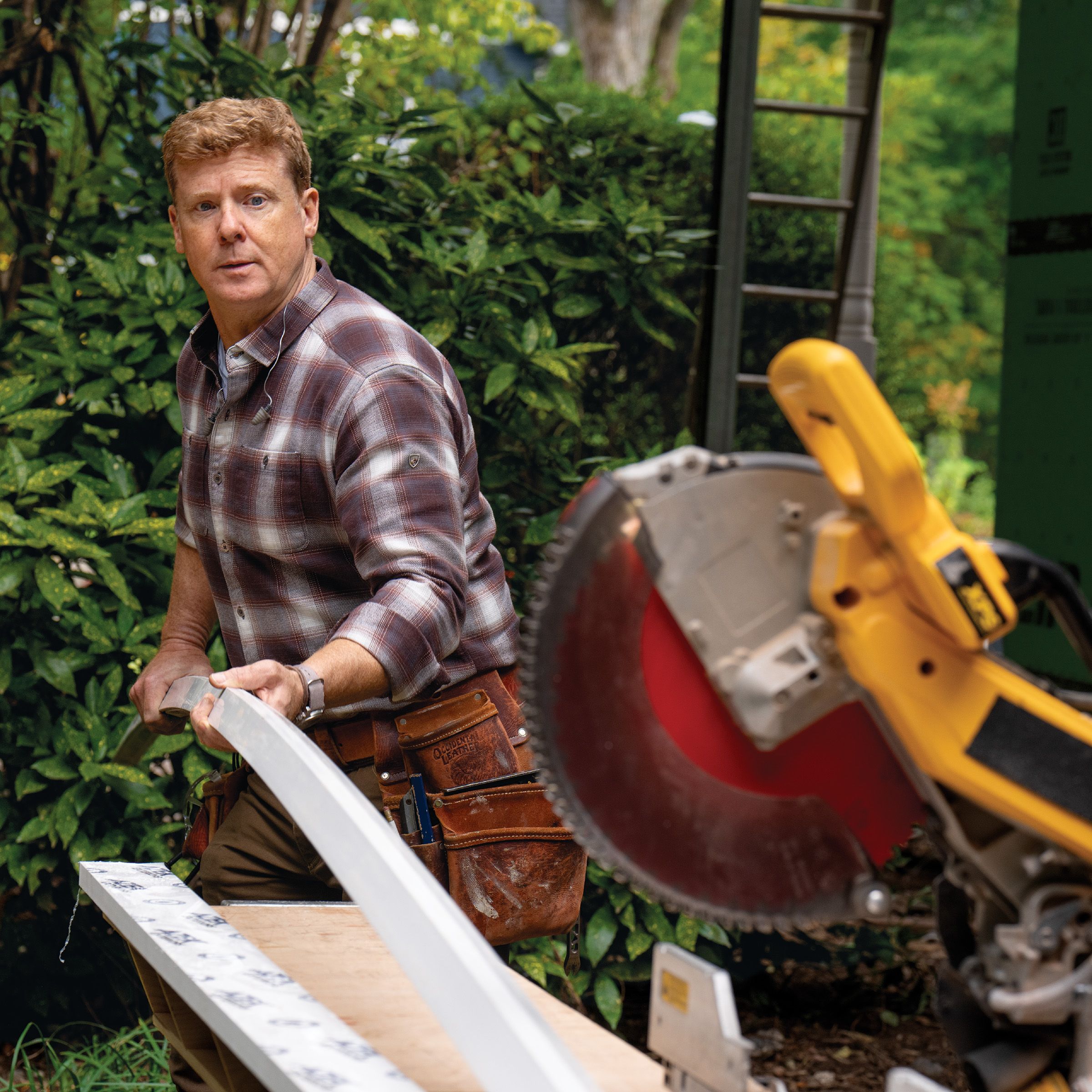
As Dettmore approached the renovation, he knew the house’s structural support needed immediate attention: “This house was standing on a brick and prayer,” he says, referring to two brick chimneys that had been providing structural support but whose exposed bases, on display in the basement, were crumbling. Thankfully, the house’s perimeter foundation of locally quarried stone was in decent shape.
With no need for the chimneys— the family did not want fireplaces, and the new heat pump–based HVAC system they chose would not need them—Dettmore began the work of demolishing the chimneys and shoring up the structure with a built-up 93/4-inch-deep LVL main beam in the basement supported by three new concrete footings. Almost immediately, he found extensive termite damage, the worst in a back corner of the basement where an original foundation wall met the decades-old slab addition.
Creative Solutions to Structural Challenges
“Remodeling done over the years often adds layers of complexity to a renovation,” he says. The termite damage forced a big change: They would have to replace all the first- and second-floor joists, which they had thought would be fine once the main beam was in place.
With that bad news came an opportunity: Although the original renovation plans had not called for replacing the partly enclosed switchback main stairway—a feature Sunita had never liked because it felt like a barrier just inside the front door—the homeowners asked Kopec for a straight run of stairs to add a sense of spaciousness.
“There are always challenges when renovating old houses because of the unknowns,” says TOH general contractor Tom Silva. “Here, they knew about the crumbling brick, and then they found the termite damage. On the plus side, they will have a practically new house without undulating floors.”
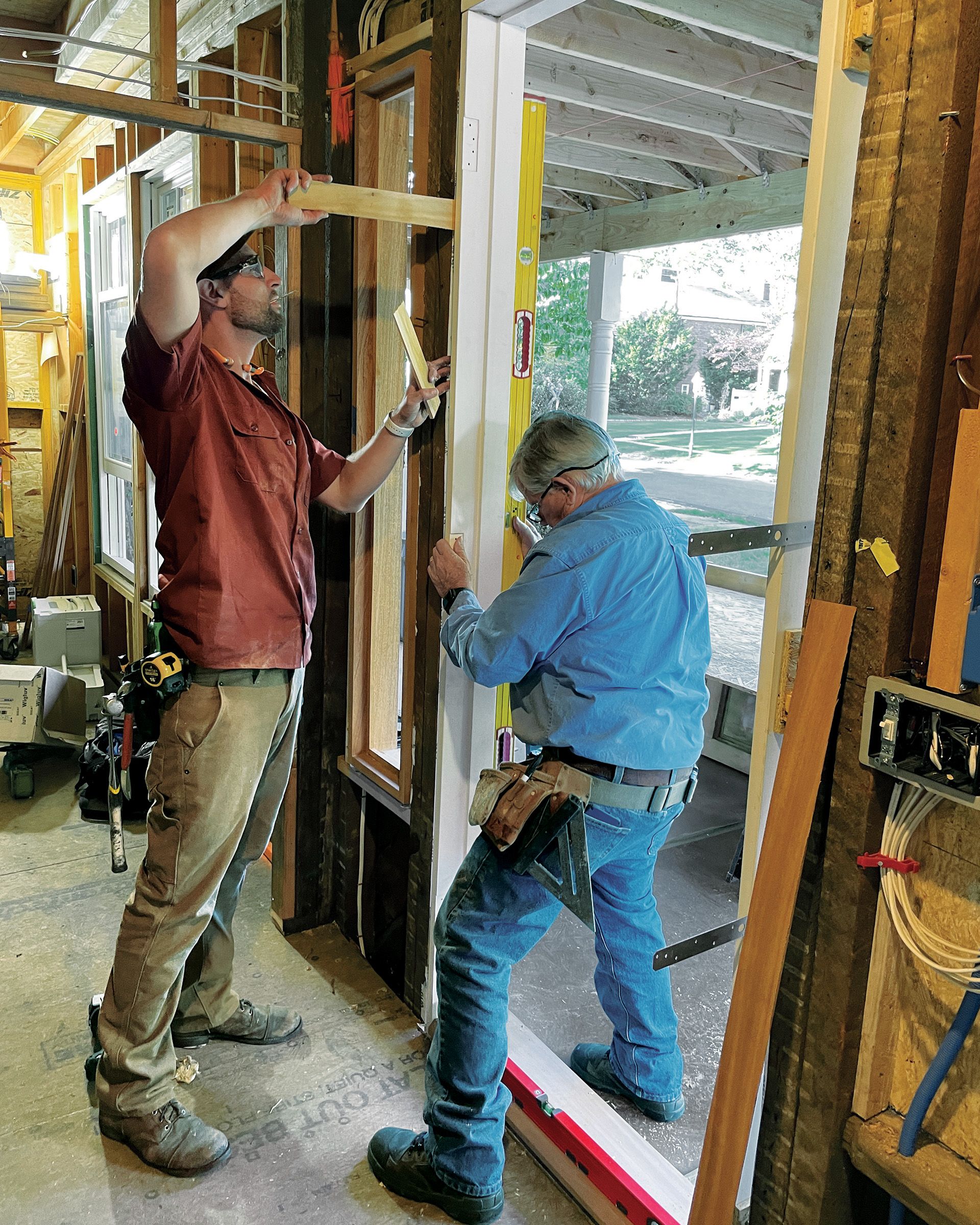
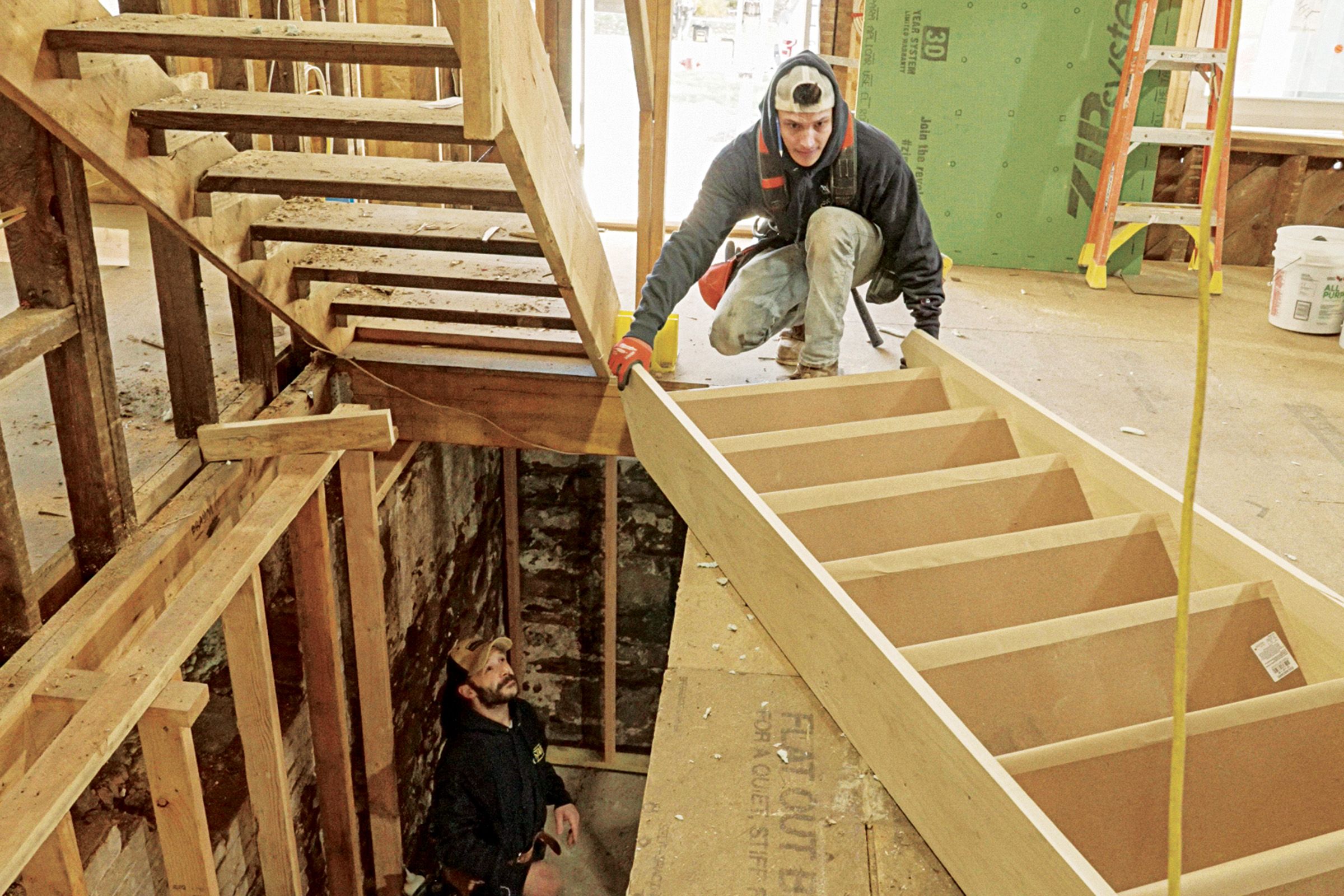
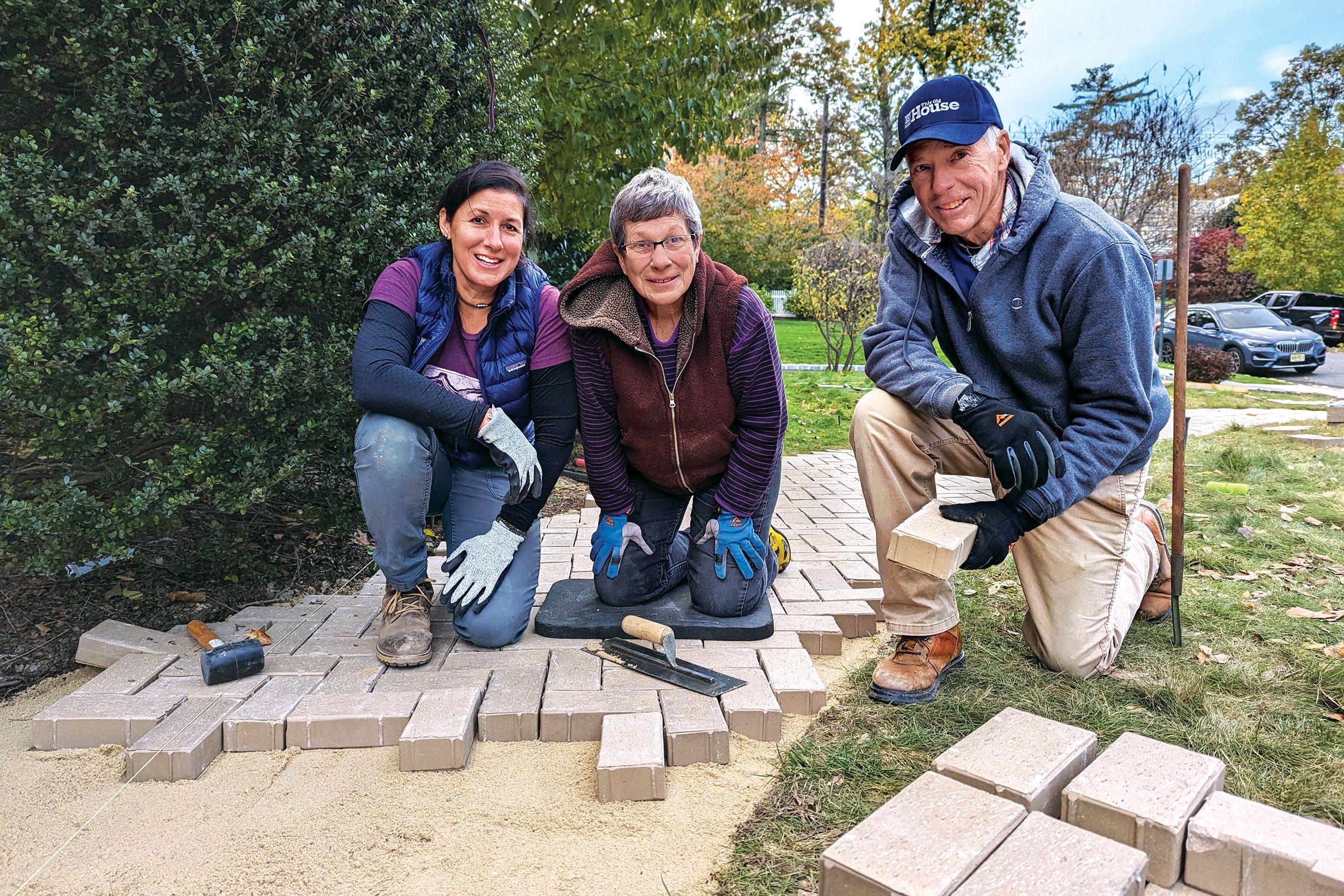





Dettmore is known for marrying practicality with precision construction in his renovations. To replace the front porch’s crumbling brick piers, he hired a company to install helical piers—steel screw piles machine-driven into the ground—knowing that it would take less time than the process of building brick or concrete piers by hand, which is labor-intensive and subject to inspections. Similar thinking led him to commission factory-made stairs, a better value than having carpenters spend days building them on the job.
When the team realized that replacing the old clay sewer line the traditional way—digging a trench from the house to the road—would uproot a beautiful Japanese maple near the driveway, Dettmore suggested a trench-less technique he had used before. TOH plumbing and heating expert Richard Trethewey gave the solution a thumbs-up: “What a great way to avoid the upheaval.”
Cherish the Old, Embrace the New
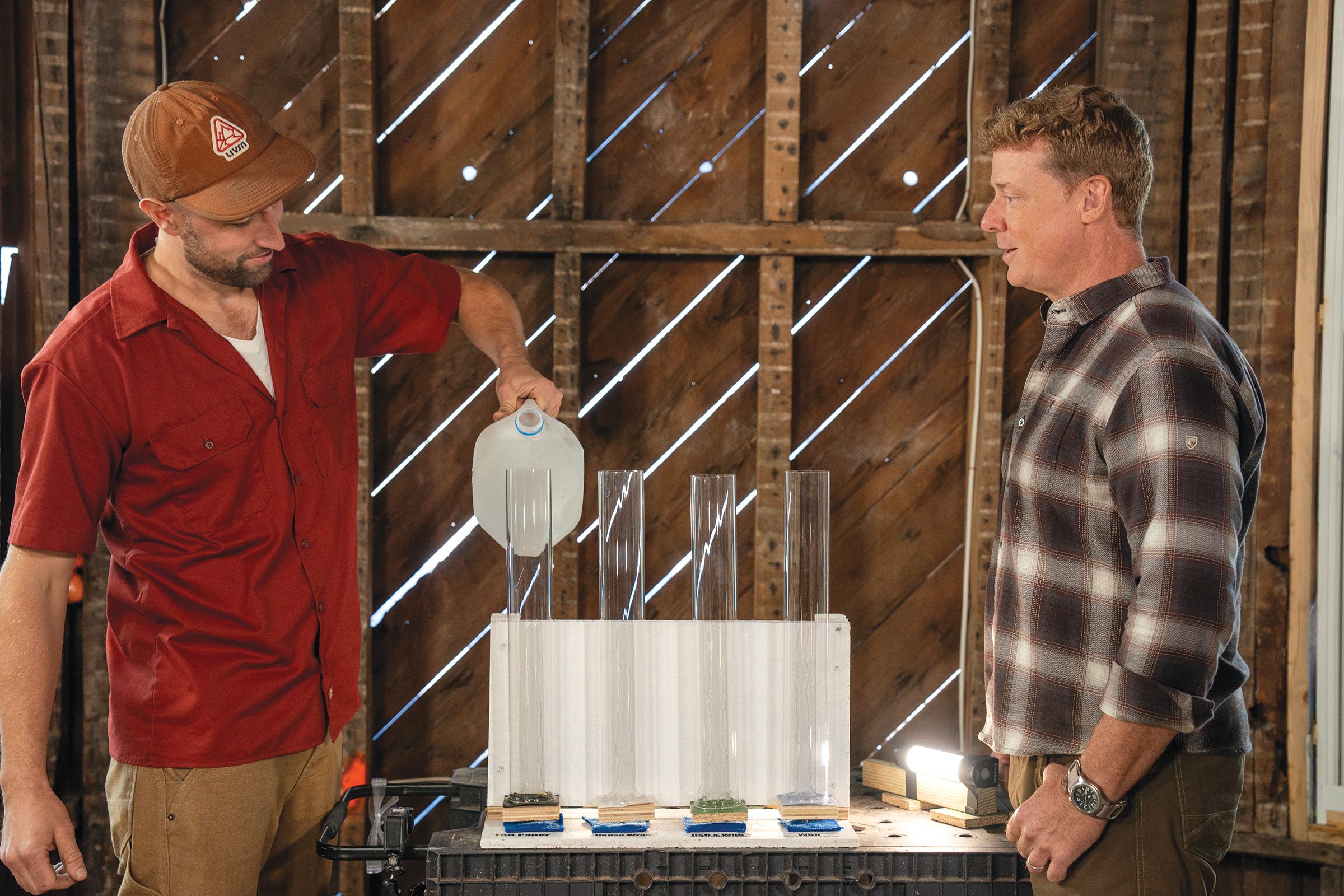
Dettmore is passionate about using efficient, modern construction methods that give a house protection and durability for the ages—and that’s exactly how he undertook this project. Choosing the correct water-resistive barrier (WRB) for a house, a.k.a. house wrap, is one of the most important decisions a builder makes, says Dettmore. “You need something that will continue to be air and water resistive in the future, even after all the holes go into the house from nailing siding.”
With the house’s original sheathing—and gaps— evident behind them, Dettmore set up a demonstration to show Kevin how water affects four different types of WRB: Felt paper, used from the 19th century on; woven plastic house wrap, first used in the 1980s; current-day oriented strand board (OSB) with an impregnated barrier; and modern self-adhering membrane.
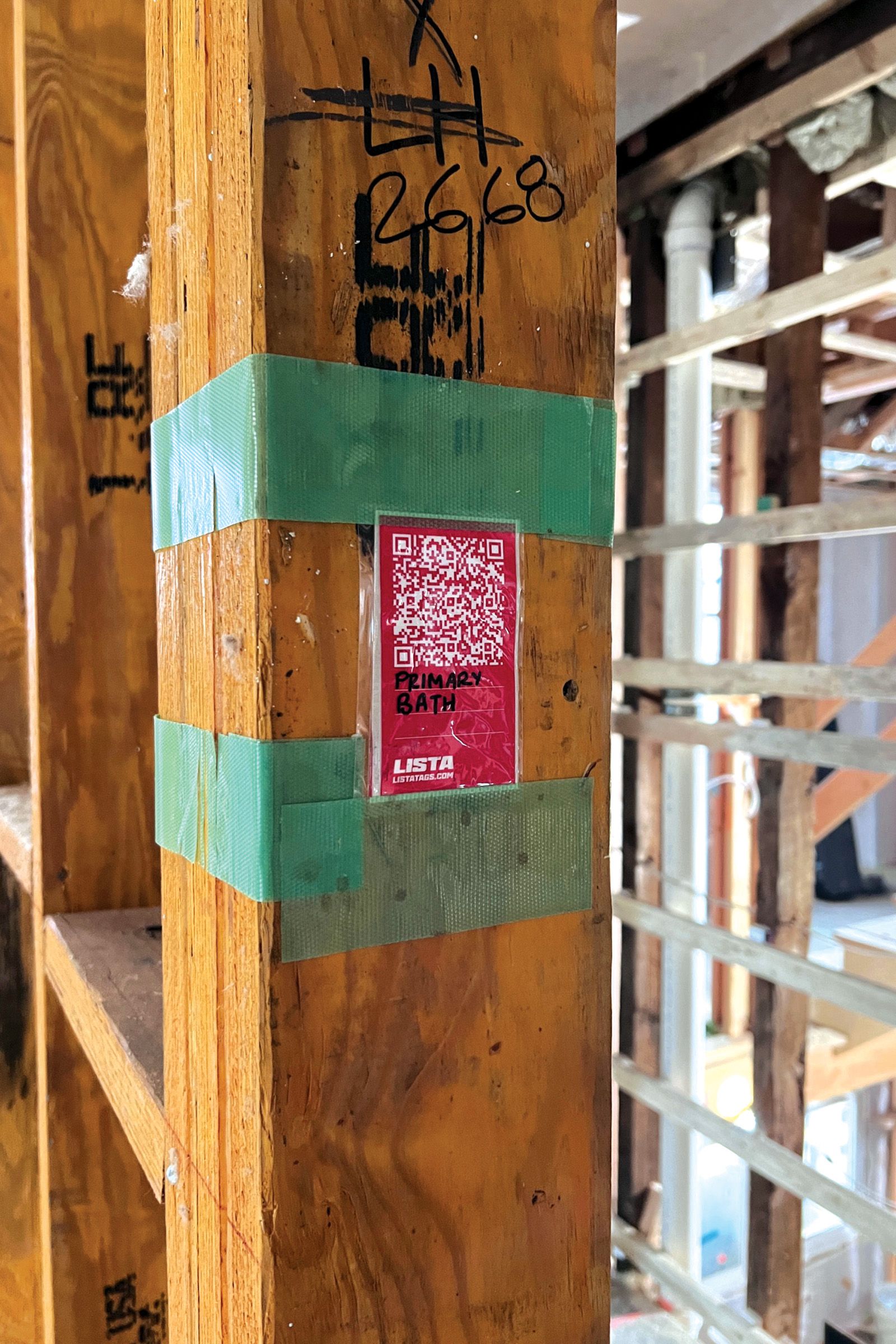
Dettmore is using the two top performers on the Glen Ridge house: OSB with an impregnated barrier on the newly built areas (the green wrap, seen opposite), as a time-saver, since it is sheathing and house wrap in one, and self-adhering membrane on the existing parts of the house (the blue wrap, opposite) because it will effectively seal the old, gap-laden sheathing.
Modern technology had a prominent role in this renovation as well. “It’s all about organization,” says Dettmore. QR codes on a framing member in the upstairs primary bath, correspond to app-based photos and documents that Dettmore and his team upload regularly. This enables anyone stepping into a room at any stage of the construction to know what’s behind wallboard or finished walls using their smartphone.
If a tradesperson arrives to put baseboard in a bedroom, they can scan the QR code to see the plumbing layout so they won’t be nail- ing into a pipe, for instance. Ultimately, the code for each room will include model numbers, paint colors, and anything else the family will need to do repairs and maintenance; the code will end up inside a cabinet or in another discreet location.
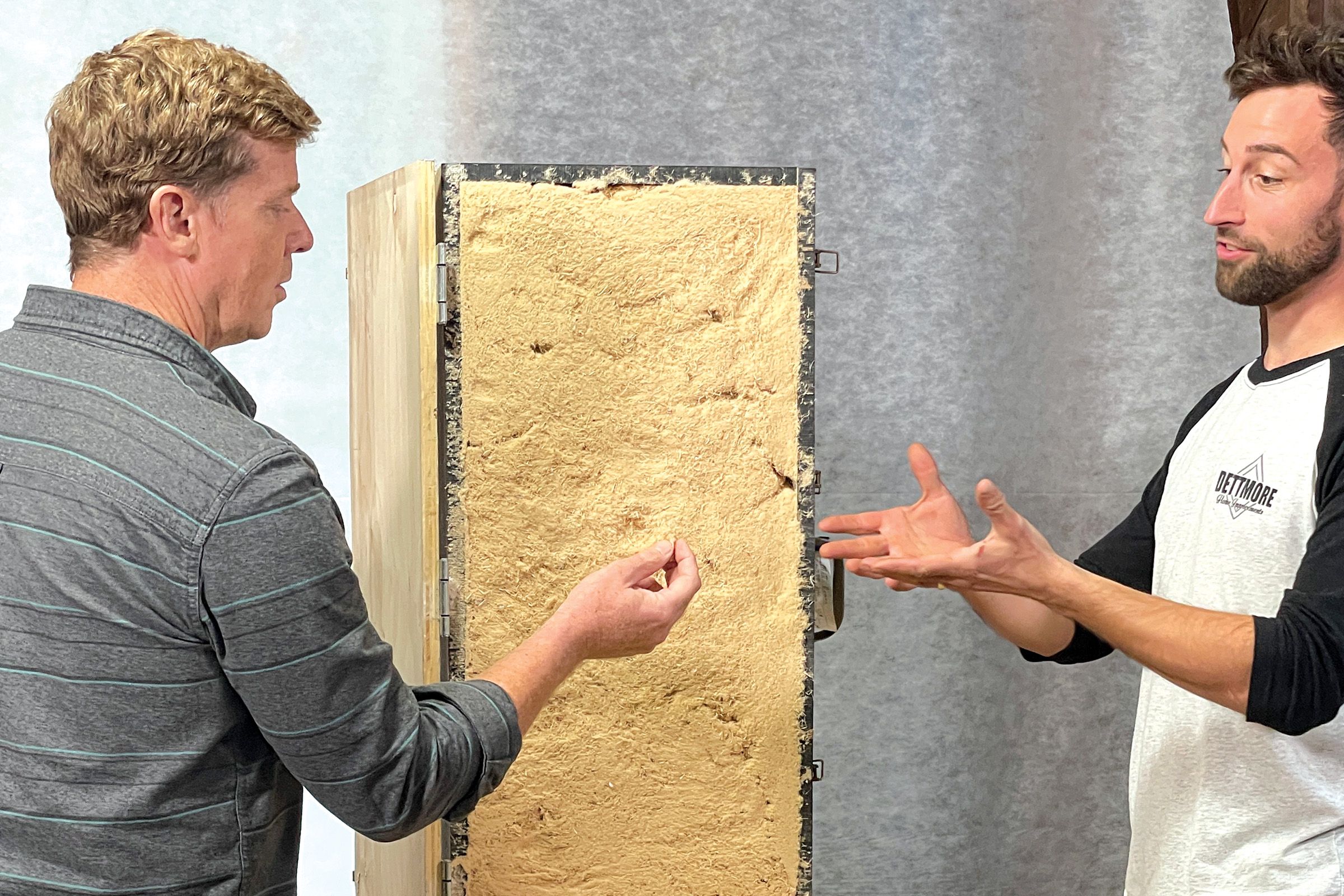
In terms of insulation, Dettmore chose a new wood-fiber product for most of the exterior walls. Similar to cellulose in terms of R-value and fire-retardant properties, it is also blown into wall cavities in the same way. But while cellulose insulation is made from recycled newsprint, wood-fiber insulation is made from postindustrial wood waste from sawmills, more available today as less newsprint is produced.
Wood-fiber insulation, which has been used in Europe for years, has only two ingredients: wood and borates. “Plus, it’s a really nice product to have around the worksite,” says Dettmore. “It’s easy to get off clothing and has a woodsy, camping vibe.”
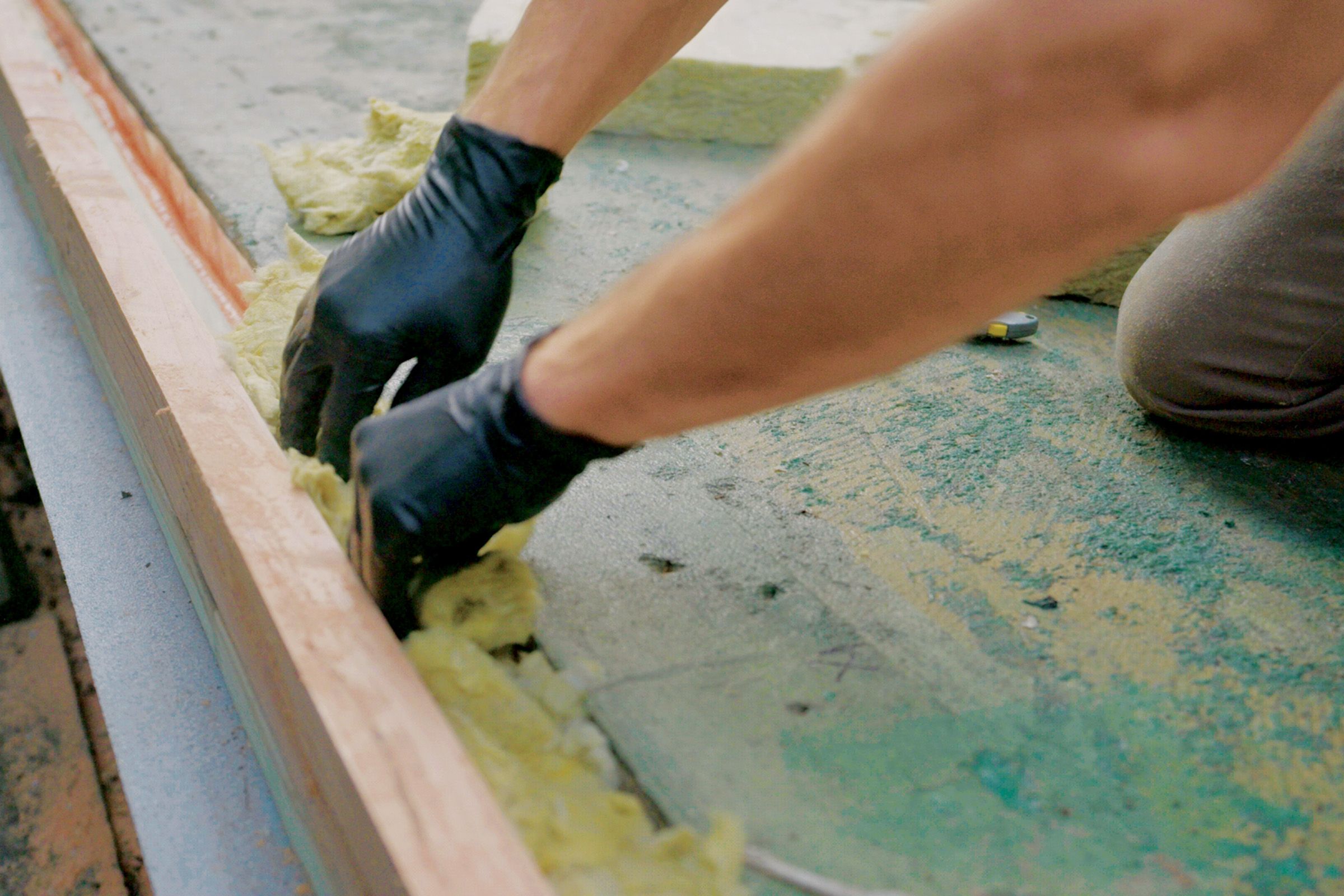
To protect the house from future termite damage, Dettmore installed a copper termite shield as a barrier between the foundation and the wood framing, including around the kitchen slab. Termites find the metal unappealing, since they can’t tunnel through or feed on it. Copper itself is durable and resistant to decay, so the shields should remain effective over time, although in geographic areas known for termites, regular pest management is also recommended.
A Finishing Touch to the Curb Appeal
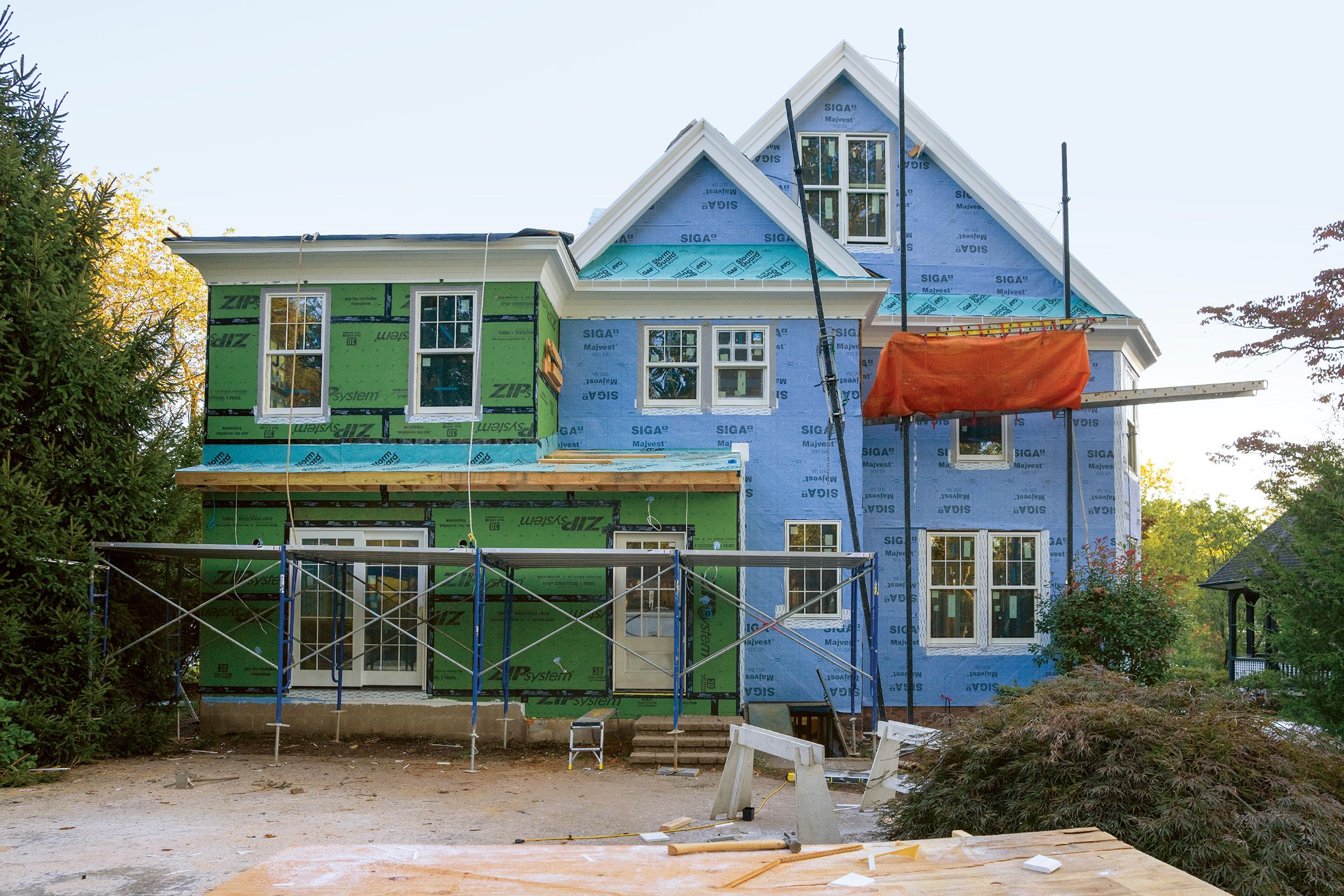
Outdoors, TOH landscape contractor Jenn Nawada admired the abundance of mature trees and plants at the house. “Sunita and Shankar have some gorgeous plants that we will definitely keep, but there are a few things we’ll remove, like the large hollies blocking the view of the house from the street,” says Jenn. “Replacing the concrete front walkway with a brick path will add curb appeal.”
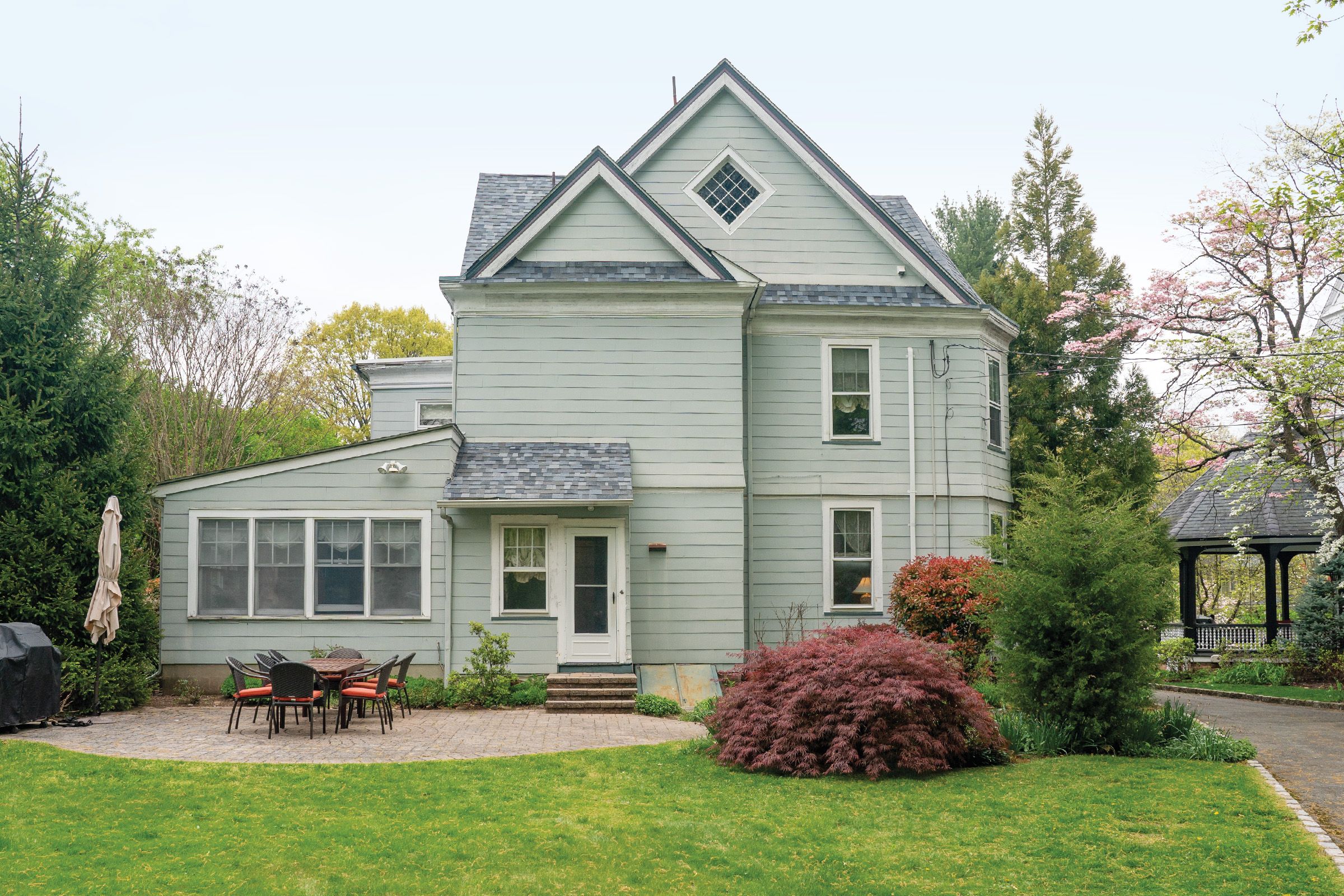
From the start, reusing existing elements was also a goal. The original front door, newly painted, will be reinstalled. And the family is thrilled that Dettmore salvaged undamaged old pine floor joists and will use the wood to make benches and built- ins for the kitchen and mudroom.
Through all the reno work, Sunita and Shankar are buoyed at the thought of multiple generations living under one roof. “The pandemic reminded us all of how important it is to stay close to family,” says Shankar. Proving the point, their son, Vijay, recently moved back to Glen Ridge, buying the 1920s house the family previously lived in. It won’t be long before everyone is gathering at the 1887 house. Best of all, once the two generations are back in the house, there will be room to grow.
